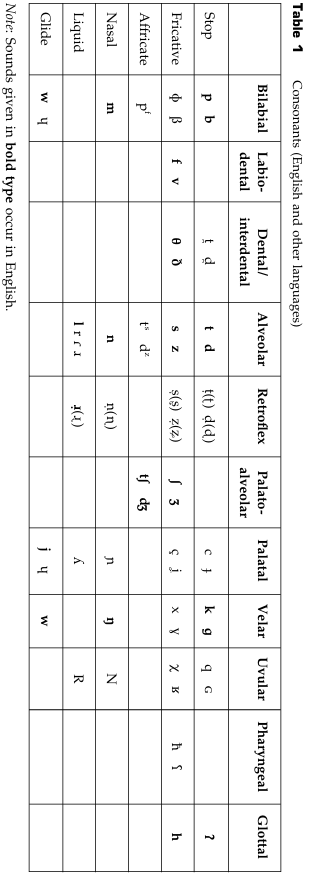
Secondary articulations
 المؤلف:
Mehmet Yavas̡
المؤلف:
Mehmet Yavas̡
 المصدر:
Applied English Phonology
المصدر:
Applied English Phonology
 الجزء والصفحة:
P15-C1
الجزء والصفحة:
P15-C1
 2025-02-24
2025-02-24
 896
896
Secondary articulations
In the production of some consonant sounds, we observe the addition of a secondary, lesser constriction to the primary articulation. The distinct sound that is superimposed on the original creates the secondary articulation. Four types of secondary articulation are common: labialization, palatalization, velarization, and pharyngealization.

● Labialization: This term refers to the addition of lip rounding, resulting in the rounded vowel quality of the type seen in boot. An example of a labialized consonant is found in the initial sound of quick. The diacritic for labialization is a raised [w], because it is often accompanied by raising the back of the tongue (e.g. [kwɪk]). Labialized consonants contrast with non-labialized consonants in some African languages.
● Palatalization: This is the raising of the blade of the tongue toward the hard palate without touching the roof of the mouth. It can be considered as the addition of a [j] quality to the primary articulation, and the diacritic for palatalized consonants is a raised [j]. Russian and other Slavic languages have palatalized consonants contrasting with the regular consonants (e.g. [brat] “brother” vs. [bratj] “to take”).
● Velarization: This term refers to the raising of the back of the tongue toward, but not touching, the velum, as for the vowel [u] without the lip rounding. The diacritic for velarization is [ ̴]. Scots Gaelic contrasts velarized and non-velarized consonants (e.g. [balə] “town” vs. [baƗə] “ball/ wall”).
● Pharyngealization: This refers to the lowering of the back of the tongue and a retraction of the root toward the pharynx wall, resulting in a narrowing of the pharynx (i.e. the addition of an [ɑ] quality). The same diacritic that is used for velarization is commonly used for pharyngealization, as no language makes a contrast between these consonant types.
 الاكثر قراءة في Phonology
الاكثر قراءة في Phonology
 اخر الاخبار
اخر الاخبار
اخبار العتبة العباسية المقدسة


